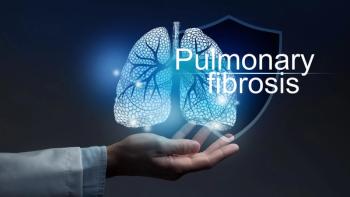
- Pharmaceutical Technology-11-02-2015
- Volume 39
- Issue 11
EU’s New Telematics Strategy for the Regulation of Medicines
The scheme aims to ensure that EMA and licensing authorities of EU member states will use the same IT system, based on a single data standard.
The European Union has embarked on an ambitious programme to streamline the collection and use of data on new and licensed medicines and their substances, including excipients, throughout the EU. The scheme aims to ensure that the European Medicines Agency (EMA), the EU central organization for authorizing medicines throughout Europe, and the licensing authorities of the EU’s 28 member states will use the same IT system, based on a single data standard. The objectives behind the programme are to improve the efficiency of regulatory processes, raise cost effectiveness, achieve interoperability for the sharing of knowledge, and enhance collaboration through promoting open access to data repositories.
The vision behind the scheme with details of its projects and their benefits was outlined in a document (1) on an EU telematics strategy and implementation roadmap for 2015–2017, published in August 2015 by the EMA and Heads of Medicines Agencies (HMA) of the member states. The strategy, however, is already running into problems, mainly stemming from the complexity of the standards being applied to achieve data uniformity and from variations in degrees of enthusiasm among the members states for the scheme.
Most licensing agencies, called national competent authorities (NCAs), are keenly supportive of the plan, but many of them want to give precedence to pursuing their own IT initiatives. A few are already refusing to participate in some existing collaborative IT projects.
Industry views
In addition, the pharmaceutical industry is unhappy that it has had minimal involvement in the creation of the strategy while it is being offered, so far, limited participation in its operation (1). The industry will not be engaged directly in the EU telematics governance structure, which will be headed by a management board representing EMA and HMA. Nonetheless, the strategy document recognizes the “significant impact” of the pharmaceutical industry, and is, therefore, allowing for its participation in project working groups.
The main European pharmaceutical trade associations are, nonetheless, expecting to be more of an active partner in the achievement of improvements to and the operation of the telematics strategy. “There has been one meeting (so far this year) between the EU telematics management board and industry representatives,” said Remco Munnik, chair of the telematics working group of the European Generic and Biosimilar Medicines Association (EGA), in an interview with Pharmaceutical Technology.
“However, the question of the frequency and the scope of the industry’s strategic contribution still remains open and a meeting once a year may not be sufficient to achieve real progress on this,” he continued. “An efficient telematics structure, supporting the EU regulatory network in its regulatory activities, is crucial for the future. As an industry, we would like to be an active partner, not only operationally but also strategically by being involved in setting objectives that can be achieved.”
The industry is already participating in an EU task force on the implementation of the International Organization for Standardization’s (ISO) Identification of Medicinal Products (IDMP), which is a key working group in realization of the telematics strategy. The five standards of the ISO, which comprise the IDMP, are at the core of the EU strategy. IDMP provides the basis for the scheme’s aim of consistency, uniformity, and single repositories where data on products and substances can be reused throughout a medicine’s lifecycle. It also has the potential to be the cornerstone of an internationally harmonious data system, particularly since the US Food and Drug Administration (FDA) is also planning to implement IDMP.
In the longer term, EMA expects that IDMP will provide the EU with a pathway to the operation of a Global Ingredient Archival System (GiNAS), a common substance identifier that uses a consistent definition of substances throughout the world. The National Centre of Advancing Translational Sciences (NCATS), part of the US National Institutes of Health (NIH), is currently developing the GiNAS.
The introduction of IDMP is proving to be a massive challenge not only for EMA and the rest of the EU’s regulatory network of NCA, but also for the pharmaceutical industry. The EU is taking on a pioneering role because it will be the first globally to implement the IDMP standards. The job is enormous, especially with substances, mainly because of the amount of existing data that has to be collated and, if necessary, changed to comply with IDMP. The aim is that the IDMP standardization of definitions of product and substance concepts will substantially improve the identification and exchange of information on medicines, not just within the EU but also internationally.
IDMP implementation deadline
In the telematics strategy document (1), July 2016 is given as the deadline for the start of the implementation of IDMP because it is the date set in the EU pharmacovigilance legislation for compliance with the standards. However, even when the document was being published, the European Commission, the EU executive responsible for the EU telematics strategy, was being pressed to adjust the deadline so that regulators and the industry would have more time to switch to IDMP.
Although there has been no official announcement, the industry and software vendors understand that the Commission has agreed that the IDMP will be introduced in phases with the first step being the issuing in July 2016 of the EU IDMP implementation guide. Also, the terms and controlled vocabularies used with existing pharmacovigilance data will by then be aligned with IDMP requirements. The submission of pharmacovigilance data to IDMP standards will now start to be mandatory in late 2017, according to the Commission.
“An important reason for the phased-wise approach is the fact that the ISO standards are not yet final and will probably only become final at the end of 2015 or early 2016,” says Munnik. “[The] industry welcomes this approach. We should rather take time and do this properly, instead of rushing and resubmitting the data due to the short preparatory phase.”
“This IDMP data are available within industry, but might not be in one place or structured,” he added. “In order to align this data in a company, multiple departments and databases will have to start sharing the same data. This is especially a challenge for generic companies with large portfolios and multiple manufacturing sites and partners.”
With substances, which include excipients as well as active ingredients, the difficulty is that the data required by IDMP, such as the characterization of chemical properties, are not kept by the pharmaceutical manufacturers but by external sources such as the contract manufacturers. “There could be huge gaps in availability as well as quality between the data held and controlled by the pharmaceutical companies themselves and that held by external sources,” Niels Henriksen, a consultant at the Danish IT service provider NNIT A/S, told Pharmaceutical Technology. “The data required by IDMP, sometimes derived from work in the early development phase of a drug, will be lying around somewhere in a document. The difficulty will be finding it.”
The main vehicles for the introduction of the IDMP-at least at the EU level-will be single data repositories, the biggest of which will be that of the Periodic Safety Update Reports (PSUR) set up under the EU’s current pharmacovigilance legislation. This legislation requires marketing authorization holders (MAHs) to provide updates on the safety profiles of the more than 500,000 medicines on the EU market. Another repository is EudraGMDP on Good Manufacturing and Distribution Practice, giving details on all GMP certificates and statements of GMP non-compliance.
Data integration and uniformity
An important stage in the implementation of the EU telematics strategy will be when all application dossiers will have to be IDMP-compliant and submitted in an electronic Common Technical Document (eCTD). This requirement has been scheduled to be mandatory by 2018 for all application dossiers within the EU’s centralized and decentralized licensing procedures. This deadline, however, may have to be rescheduled following the postponement of the start of the IDMP implementation. A lot of the barriers facing the realization of the EU telematics strategy at the member state level are derived from differences in priorities between EMA and the NCAs. EMA is required mainly to implement EU legislation on medicines regulation while the NCAs have a range of obligations including meeting EU requirements and also carrying out national policies.
“In many cases,” the EU telematics strategy document (1) acknowledges, “the NCAs have a variety of obligations outside the pharmaceutical regulatory domain.” These obligations will be dictated by public health needs, legislative mandates, and economic conditions. As a result, a lot of NCAs will be giving greater importance to their own IT projects and objectives.
The Netherlands Medicines Evaluation Board (MEB), for example, is considering the option of working with groups of other NCAs on data projects. “We are currently reconsidering our own IT strategy and infrastructure, and keeping an open eye on EU developments,” says Stan van Belkum, MEB deputy director. “Wherever and whenever, the MEB will work with colleague member states of similar size and adapt EU solutions if proven functionally advantageous.”
The agency also wants to concentrate on improving its own IT services, particularly those aimed at helping the industry and some of which provide different services to those at the EU level. “Since 2007, the MEB has a fully operational workflow and document management system dedicated to all MEB business processes in both national and EU procedures,” says van Belkum. “On top of that, we provide marketing authorization holders online access to information about the status of their application procedures. For the coming years, the MEB’s IT strategy aims to extend this portal with additional functionality and to make part of the information in that portal publicly available-for example, assessment reports, product information and relevant patient information.”
Within the EU’s medicines regulatory network, full data integration and uniformity may not be accomplished for many years, but for the industry, the priority will be to advance the introduction of IDMP as far as possible not just for the sake of reducing regulatory costs but also for its business opportunities.
References
1. HMA and EMA, EU Telematics Strategy and Implementation Roadmap 2015-2017, EMA/532765/2015 (London, August 2015).
Article DetailsPharmaceutical Technology
Vol. 39, No. 11
Pages: 18–19
Citation: When referring to this article, please cite it as S. Milmo, “EU’s New Telematics Strategy for the Regulation of Medicines,” Pharmaceutical Technology 39 (11) 18–19 (2015).
Articles in this issue
about 10 years ago
Using Dynamic Thermal Imaging to Correct Sealing Problemsabout 10 years ago
CMOs Continue to Improve Overall Biomanufacturing Performanceabout 10 years ago
FDA Overhauls Inspection Operationsabout 10 years ago
Good Documentation Practice: Saving Data for the Long Termabout 10 years ago
Identifying Causes Of Delaminationabout 10 years ago
Piloting Track-and-Trace Implementationabout 10 years ago
Advances in Heterocyclic Chemistry for API Synthesisabout 10 years ago
Exploring the Potential of Continuous Coatingabout 10 years ago
Demonstrating Therapeutic Equivalence for Generic Topical ProductsNewsletter
Get the essential updates shaping the future of pharma manufacturing and compliance—subscribe today to Pharmaceutical Technology and never miss a breakthrough.





